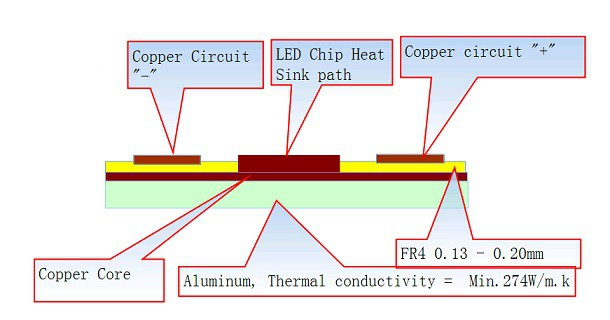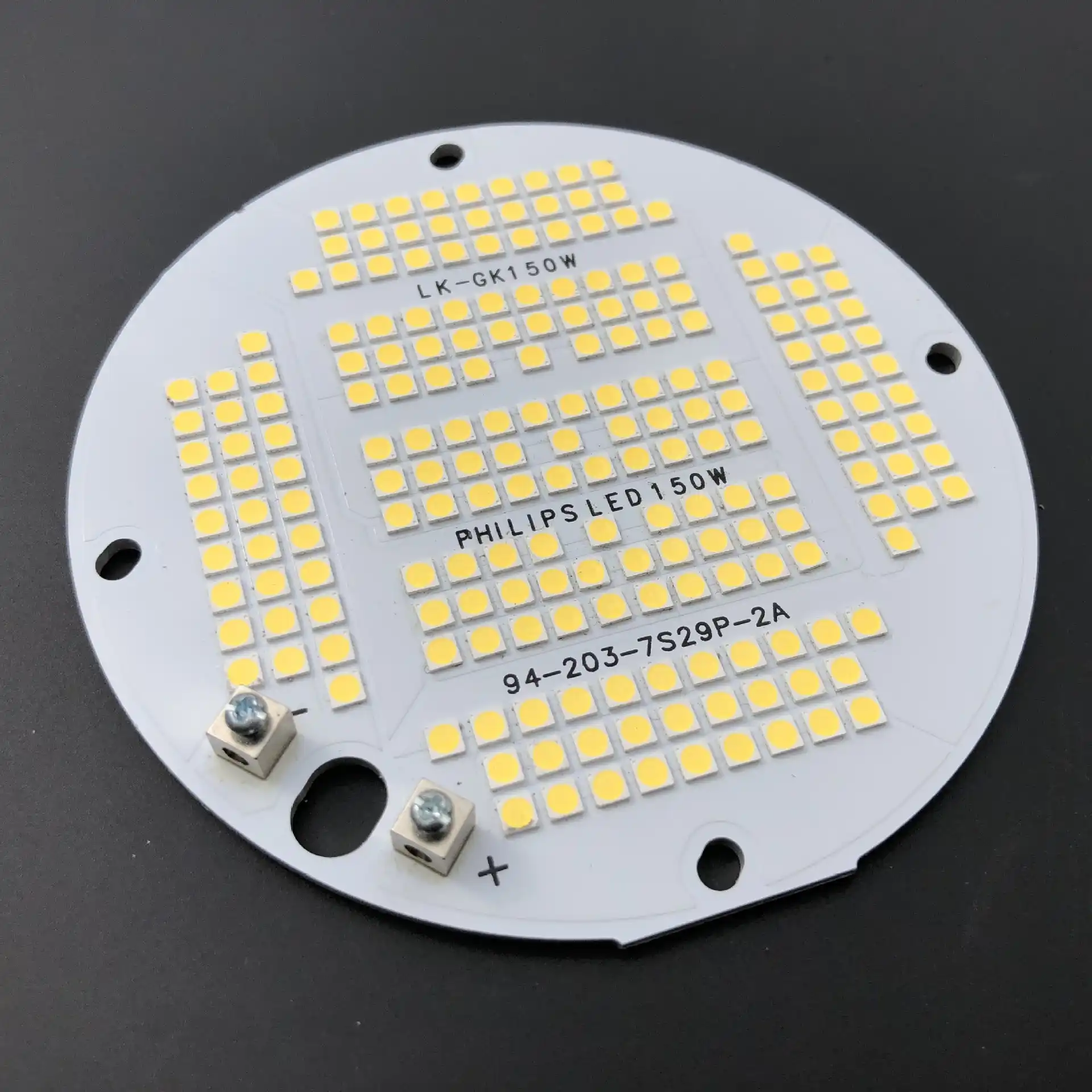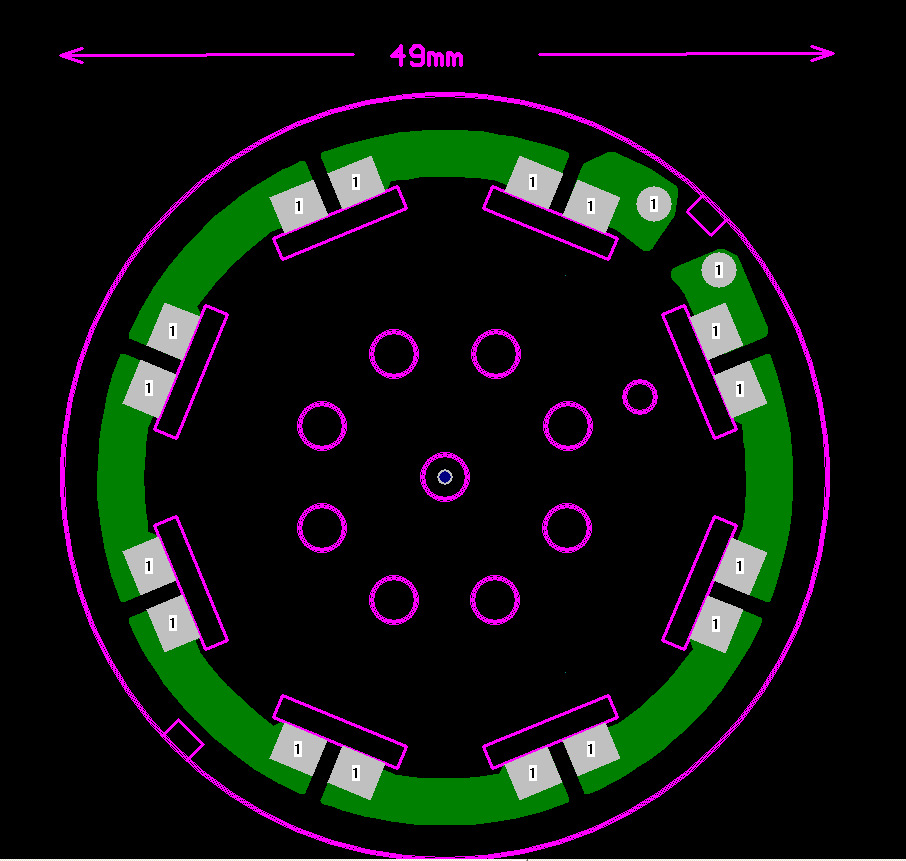If you're looking to optimize LED lighting systems with efficient heat management and long-lasting performance, Metal Core PCBs (MCPCBs) are the solution you need. These specialized circuit boards are designed to handle the high heat generated by LEDs, ensuring better durability and efficiency. In this guide, we'll dive deep into the benefits of metal core PCBs for LEDs, explore aluminum PCB thermal performance, discuss copper PCB advantages for LED lighting, compare metal core PCB materials, and provide insights on designing with MCPCBs for high-power LEDs.
What Are Metal Core PCBs and Why Are They Essential for LED Lighting?
Metal Core PCBs, often abbreviated as MCPCBs, are printed circuit boards that feature a metal base layer, typically aluminum or copper, instead of the traditional fiberglass used in standard PCBs. This metal layer acts as a heat sink, efficiently dissipating the heat generated by electronic components like LEDs.
LEDs, especially high-power ones, produce significant amounts of heat during operation. If this heat isn't managed properly, it can reduce the lifespan of the LED, lower its efficiency, and even cause system failures. MCPCBs address this issue by providing superior thermal conductivity, making them a go-to choice for LED lighting applications ranging from residential bulbs to automotive headlights and industrial lighting systems.

Key Benefits of Metal Core PCBs for LEDs
Using MCPCBs in LED lighting systems offers several advantages, particularly when it comes to thermal management and overall performance. Let's explore some of the standout benefits:
- Superior Heat Dissipation: MCPCBs can transfer heat away from LEDs much faster than traditional PCBs. For instance, aluminum, a common base material, has a thermal conductivity of around 200 W/mK, compared to just 0.3 W/mK for standard FR4 material. This prevents overheating and extends LED lifespan.
- Enhanced Durability: The robust metal base provides mechanical stability, making MCPCBs resistant to vibrations and physical stress—ideal for automotive or outdoor lighting.
- Compact Design: With better heat management, designers can place LEDs closer together without worrying about thermal buildup, enabling smaller, more efficient designs.
- Energy Efficiency: By maintaining optimal operating temperatures, MCPCBs help LEDs run more efficiently, reducing energy waste and lowering operational costs.
These benefits make MCPCBs indispensable for modern LED applications, especially where reliability and performance are critical.
Aluminum PCB Thermal Performance: Why It’s a Popular Choice
Aluminum is one of the most widely used materials for MCPCBs in LED lighting, and for good reason. Its thermal performance is exceptional for the cost, making it a practical option for many applications. Here's why aluminum PCBs stand out:
- High Thermal Conductivity: As mentioned earlier, aluminum boasts a thermal conductivity of approximately 200 W/mK, allowing it to quickly dissipate heat from LEDs and maintain stable operating temperatures.
- Lightweight Design: Aluminum is much lighter than other metals like copper, which is beneficial for applications where weight is a concern, such as portable lighting or automotive systems.
- Cost-Effectiveness: Compared to other metal core materials, aluminum is more affordable while still providing excellent thermal management, making it ideal for mass-produced LED products.
However, aluminum PCBs may not be suitable for extremely high-power applications where even greater thermal conductivity is needed. In such cases, other materials might be considered.
Copper PCB Advantages for LED Lighting: When Performance Matters Most
While aluminum is a popular choice, copper-based MCPCBs offer distinct advantages, especially for high-performance LED lighting systems. Here's why copper is often preferred in demanding scenarios:
- Exceptional Thermal Conductivity: Copper has a thermal conductivity of around 400 W/mK—nearly double that of aluminum. This makes it the best choice for high-power LEDs that generate intense heat.
- Better Electrical Conductivity: Copper's superior electrical properties reduce power loss, ensuring that LED systems operate at peak efficiency.
- Ideal for High-Power Applications: For applications like industrial lighting or high-intensity automotive headlights, copper MCPCBs can handle the thermal load without compromising performance.
The main downside of copper PCBs is their weight and cost. Copper is heavier and more expensive than aluminum, so it’s typically reserved for applications where top-tier thermal performance justifies the added expense.
Comparing Metal Core PCB Materials: Aluminum vs. Copper vs. Others
Choosing the right material for an MCPCB depends on the specific requirements of your LED lighting project. Let's compare the most common materials—aluminum and copper—along with other less common options:
| Material | Thermal Conductivity (W/mK) | Weight | Cost | Best Use Case |
|---|---|---|---|---|
| Aluminum | ~200 | Light | Low | General-purpose LED lighting, cost-sensitive projects |
| Copper | ~400 | Heavy | High | High-power LEDs, industrial and automotive lighting |
| Steel Alloys (Rare) | ~15-50 | Very Heavy | Moderate | Niche applications requiring extreme durability |
Aluminum is often the default choice due to its balance of performance and cost. Copper steps in for high-power applications where heat dissipation is critical. Other materials, like steel alloys, are rarely used due to their lower thermal conductivity and higher weight, but they might be considered for specialized applications requiring extreme mechanical strength.
Designing with MCPCBs for High-Power LEDs: Best Practices
Designing LED lighting systems with MCPCBs, especially for high-power applications, requires careful planning to maximize performance and reliability. Below are some key considerations and best practices:
1. Optimize Thermal Pathways
Ensure that the heat generated by high-power LEDs is efficiently transferred to the metal core. Use thermal vias—small holes filled with conductive material—to create direct pathways from the LED to the metal base. Studies suggest that thermal vias can reduce junction temperature by up to 10-15°C in high-power setups.
2. Choose the Right Dielectric Layer
The dielectric layer between the copper circuit and the metal core must balance electrical insulation with thermal conductivity. A thinner dielectric layer (e.g., 0.1 mm) improves heat transfer but may compromise insulation. Work with a manufacturer to select a material with a thermal conductivity of at least 1-2 W/mK for optimal results.
3. Match Material to Application
As discussed earlier, select aluminum for cost-effective, lightweight designs and copper for high-power, heat-intensive applications. Consider the operating environment—outdoor LEDs may require additional coatings for corrosion resistance if aluminum is used.
4. Account for Board Thickness
The thickness of the metal core impacts both thermal performance and structural rigidity. A thicker core (e.g., 1.6 mm) provides better heat dissipation but increases weight and cost. For most LED applications, a core thickness of 1.0-1.6 mm strikes a good balance.
5. Test for Thermal Performance
Before finalizing a design, simulate thermal performance using software tools or physical prototypes. Measure the junction temperature of LEDs under full load to ensure it stays within the manufacturer’s recommended range, typically below 85°C for optimal lifespan.

Applications of Metal Core PCBs in LED Lighting
MCPCBs are used across a wide range of LED lighting applications due to their ability to handle heat effectively. Some common uses include:
- Residential Lighting: LED bulbs and downlights benefit from aluminum MCPCBs for cost-effective heat management.
- Automotive Lighting: Headlights and taillights often use copper MCPCBs to handle high power and ensure reliability under varying conditions.
- Industrial Lighting: High-bay lights and floodlights rely on MCPCBs to manage the intense heat of high-power LEDs in harsh environments.
- Street and Outdoor Lighting: MCPCBs provide durability and thermal performance for LEDs exposed to weather and temperature fluctuations.
Challenges and Limitations of Metal Core PCBs
While MCPCBs offer significant advantages, they come with some challenges that designers must consider:
- Higher Cost: Compared to standard FR4 PCBs, MCPCBs are more expensive due to the metal base and specialized manufacturing processes.
- Design Complexity: Incorporating thermal vias and selecting the right dielectric material can complicate the design process.
- Weight Considerations: Especially with copper-based MCPCBs, the added weight can be a drawback for portable or lightweight applications.
Despite these challenges, the benefits of MCPCBs often outweigh the drawbacks, especially for high-performance LED systems.
How to Choose the Right MCPCB for Your LED Project
Selecting the right MCPCB involves evaluating several factors based on your project needs:
- Power Requirements: High-power LEDs need copper for better heat dissipation, while low to medium-power LEDs can use aluminum.
- Budget Constraints: If cost is a major concern, aluminum MCPCBs provide a good balance of performance and affordability.
- Environmental Conditions: For outdoor or high-vibration environments, prioritize durability and corrosion resistance in material selection.
- Size and Weight: Consider the physical constraints of your design, opting for lighter materials like aluminum when weight is a factor.
Working with a trusted PCB manufacturer can help you navigate these choices and customize an MCPCB solution tailored to your specific LED lighting application.
Conclusion: Why Metal Core PCBs Are the Future of LED Lighting
Metal Core PCBs have become a cornerstone of modern LED lighting systems, offering unmatched thermal management, durability, and efficiency. Whether you’re leveraging aluminum PCB thermal performance for cost-effective designs or tapping into copper PCB advantages for high-power LED lighting, MCPCBs provide the reliability needed for today’s demanding applications. By understanding the differences between metal core PCB materials and following best practices for designing with MCPCBs, you can create LED solutions that perform better and last longer.
At ALLPCB, we’re committed to helping you bring your LED lighting projects to life with high-quality MCPCBs tailored to your needs. Explore the possibilities of metal core technology and elevate your designs to new heights of performance and efficiency.
 ALLPCB
ALLPCB








